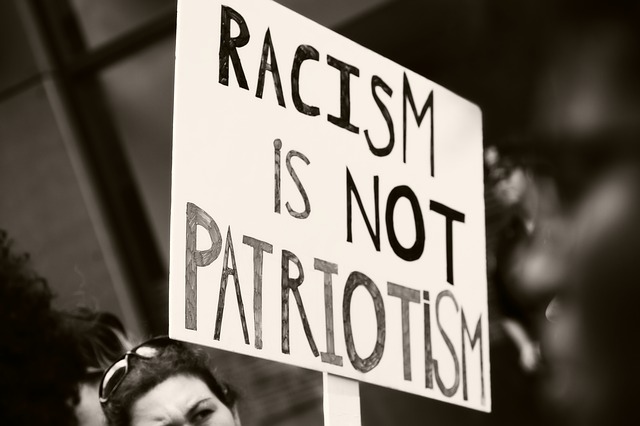
Racism has emerged as a security issue—yet again. This has been brought home dramatically by the attack in Christchurch and the responses. Like many nations, Australia has had to deal with deadly violence from residents motivated by an extreme version of Islam that operates across national boundaries. The programs and interventions government has put in place have had significant success in countering jihadist terrorism. But structurally and ideationally, racism is a fundamentally different matter than jihadism and will therefore demand different approaches.
The countering violent extremism
page on the Department of Home Affairs website sets out the government’s intention to ‘build resistance to all forms of violent extremism, whether politically, religiously or racially motivated’. It asserts that, ‘The best way to counter violent extremism is to prevent radicalisation emerging as an issue by addressing the societal drivers that can lead to disengagement and isolation’.
The Australian government’s
Living Safe Together webpage explains how the government funds ‘settlement and multicultural community initiatives’ designed to ‘enhance Australia’s social cohesion by supporting community harmony, migrant integration and strengthening economic participation’. This is to assist communities to ‘identify and prevent people from moving down the path of radicalisation to violence’.
It’s an approach that’s strongly influenced by several decades of experience with and research on violence arising on the radical fringes of a particular religion. The emphasis is therefore primarily, although not exclusively, on migrant and settler communities with a focus on social groups that are identifiable because they share an origin, culture, language and/or religion, and especially Islam.
The strategy involves equipping communities to identify the behavioural signs displayed by individuals undergoing a conversion by extremist ideology in time to intervene. The advice proffered is general and assumes that a ‘radicalisation’ process is involved that can be detected by certain changes in behaviour and social relations that make the individual undergoing them stand out from the crowd.
But race is not interchangeable with environmental, political or religious ideology. There are no equivalent identifiable ‘communities’. The campaign against jihadist extremists could target the Islamic culture in which it was most likely to arise and authorities could monitor the religious institutions which might breed violent ideology. The communities in which individuals showing signs of conversion could appear were tight knit. Views on race, including a strong attachment to race as a way of making sense of the world, are ubiquitous and transcend nationality, religion, class, education and gender. They are not located in a particular community.
On one hand racism is an everyday affair and self-identification by race is widespread. Many people would dispute that they hold racist notions on the assumption that racism involves overt discrimination. However, it is in day-to-day conversations and exchanges that racial identities are formed and perpetuated. In
Racism and everyday life: social theory, history and ‘race’ (2016), Andrew Smith examines how ‘ideas of everyday-ness have been a part of, and are marked by, the history of modern race-making’.
Others hold clear hierarchical views about race. But they don’t form a consensus. Some separate humanity into Caucasian, Asian and African, perhaps adding Mongolian, Polynesian and Melanesian, sometimes with Indigenous Australians and Native Americans included. Even within those groups, Europeans are sometimes divided into the Nordic, Alpine and Mediterranean races or Aryans and non-Aryans. For many of these, race serves not just to distinguish groups but to establish superiority based on race. This is powerfully demonstrated In
The races of Europe: construction of national identities in the social sciences, 1839–1939 (2016) by Richard McMahon.
Richard J. Perry in
‘Race’ and racism: the development of modern racism in America (2007) notes that ‘assumptions about the reality of “race” have dodged evidence and adapted themselves to contradictory information’. He points to the ‘vastly different life experiences that millions of people face as a result of being cast into one or another “racial” category’. That the biological reality of race is scientifically discredited doesn’t obviate racism.
People dispossessed, repressed or discriminated against because of racial tagging are often forced into degraded and desperate circumstances that affirm for them that they are a separate racial group, while their circumstances in turn reinforce for the dominant group that the differences are race based. Mandisi Majavu argues in
Uncommodified blackness: the African male experience in Australia and New Zealand (2017) that the ‘data suggests that, in both Australia and New Zealand, race serves as [an] invisible borderline, demarcating who legitimately belongs or does not belong’.
The apparent motivation of the Christchurch killer was
not unambiguously racist, or at least not overtly white supremacist, according to his manifesto. He does share with other mass murderers like Anders Breivik the racially tinged conviction that Europeans as a group are under threat from the demographics of immigration.
Understanding the motivations of such people—which will be especially important for security agencies seeking to recognise and prevent further episodes—will be hard. An
expert team examining the evidence described Breivik as possessing ‘the capacity for complex thought and a well-developed understanding of human nature and emotions’ and as demonstrating ‘a mind significantly more rational and reality-based than one might presume at first glance’.
The proponent of race-based violence is unlike
the radicalising jihadist who promotes ‘an increasingly strict and literal understanding of a given belief’, uses ‘ideological language’, and often does not have ‘a genuine understanding of the ideology they claim to represent’. Racists blend in.
Preventing race-based violence is going to be extraordinarily difficult for the security agencies, mainly because of the role that race plays in society, politics, science, government administration, health outcomes, sport, education and policing. It’s likely that daily life experiences and simple exposure to the norms and practices that surround them, not the internet, will establish the foundations for racist extremism.
 Print This Post
Print This Post